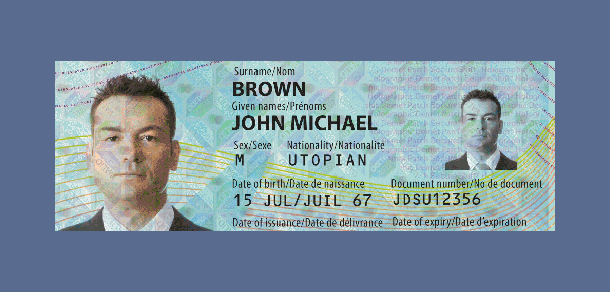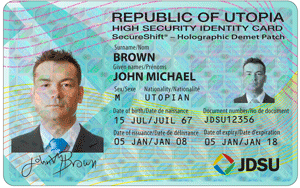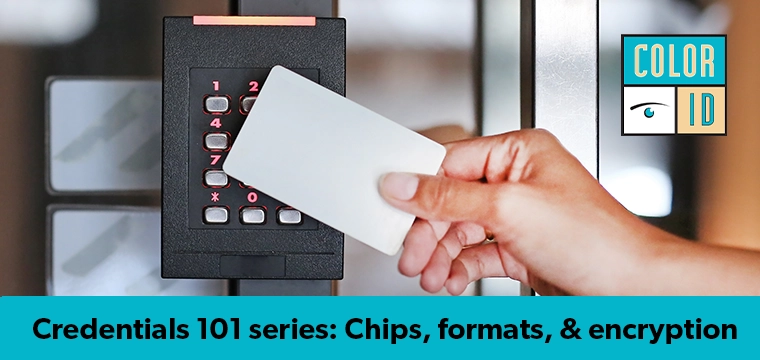
By Philip Hudson, Chairman, International Hologram Manufacturers Association
New technology continues to push the boundaries of holography as an effective ID anti-counterfeiting device. One of the most significant advances has been polycarbonate (PC) security laminates.
In recent years we have seen polycarbonate-faced ID cards become increasingly widespread, aided by the use of smaller and lower cost laser engraving equipment. It is estimated that some 40% of passports worldwide and most national ID card programs use polycarbonate.
The main attraction of hard-wearing polycarbonate from a security perspective is that the layers that make up the card or data page are fused together during production, losing all laminar structure, and cannot be pried apart individually. This is a great benefit as any printing, personal data or security feature like a hologram contained within the depth of the card cannot be accessed using mechanical means by anyone trying to tamper with the document.
Holograms, recommended for passports by ICAO and mandatory in the European Union, have traditionally had metallic or high refractive index-coated acrylic bases. However, there are drawbacks: first, the brightness of the image can fade either during the heat and pressure of the lamination process or simply become dull over time. Second, the bond between the hologram and the polycarbonate is a weak point in the card and might result in a breakdown in the lamination of the layers.
But recently we have seen advancements in polycarbonate security laminates which could overcome both drawbacks.
 The Holofuse from JDSU is a new polycarbonate film incorporating a clear holographic pattern into the surface without the use of adhesives. The technology, aimed at the identity document security market, is the first of its kind and will thwart counterfeiters as the holographic layer is integral and cannot be removed from the rest of the card.
The Holofuse from JDSU is a new polycarbonate film incorporating a clear holographic pattern into the surface without the use of adhesives. The technology, aimed at the identity document security market, is the first of its kind and will thwart counterfeiters as the holographic layer is integral and cannot be removed from the rest of the card.
The partially transparent and customized hologram within the polycarbonate film includes overt, covert and forensic security features.
The hologram is cast in to a coating which then fuses with the polycarbonate before being ready for lamination to the substrates used for ID and passport pages. It is also suitable for the laser engraving of the personal data–all of which avoids the need for a separate lamination step following the application of the variable data.
The cost saving benefit together with improved anti-counterfeiting capability will appeal to manufacturers of documents like passports, identity cards and driver licenses, where resistance to counterfeiting is vital.
There is already considerable interest in Holofuse, particularly as optical features can be incorporated into the hologram at the time of origination and more security layers in the form of tagants.
Another interesting polycarbonate development comes from Optaglio with its OVmesh, a perforated metallic holographic patch which embedded in the laminated polycarbonate card. OVmesh patches are metal and do not deteriorate under heat and pressure, retaining a high degree of brightness and clarity over a long period.
A key feature is the pitch of the mesh can be tuned to provide variable transparency over the area of the hologram, so that part of the hologram can appear fully metallised for improved verification of the overt and covert security features. Other areas can be transparent over personal data such as the photograph.
During the lamination process, the polycarbonate melts and flows through the perforations in the mesh to enable complete bonding between the layers, making it more resistant to delamination when compared to standard embedded holograms. Individual patches can be serial numbered by laser engraving to provide an audit trail of each holographic image, data page or card during the production process and in the finished product.
The product is compliant ICAO and EU requirements on standards for security features and biometrics in passports and travel documents issued by members countries, and is already in production for use in the new electronic passport being produced in Europe.
It's certain that there are some exciting new developments out there to reaffirm holography's position as an effective, added value solution for putting eye-catching, hard to copy images onto brands without relying on the application of a label–providing an extremely cost effective anti-counterfeiting solution in the process.
The International Hologram Manufacturers Association (IHMA) - http://www.ihma.org - is made up of more than 80 hologram companies. IHMA members are the leading producers and converters of holograms for banknote security, anti-counterfeiting, brand protection, packaging, graphics and other commercial applications around the world. IHMA member companies actively cooperate to maintain the highest professional, security and quality standards.




